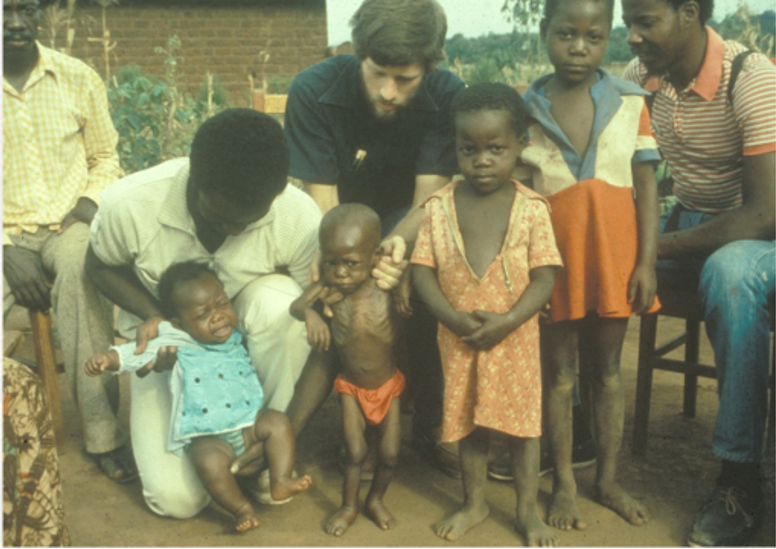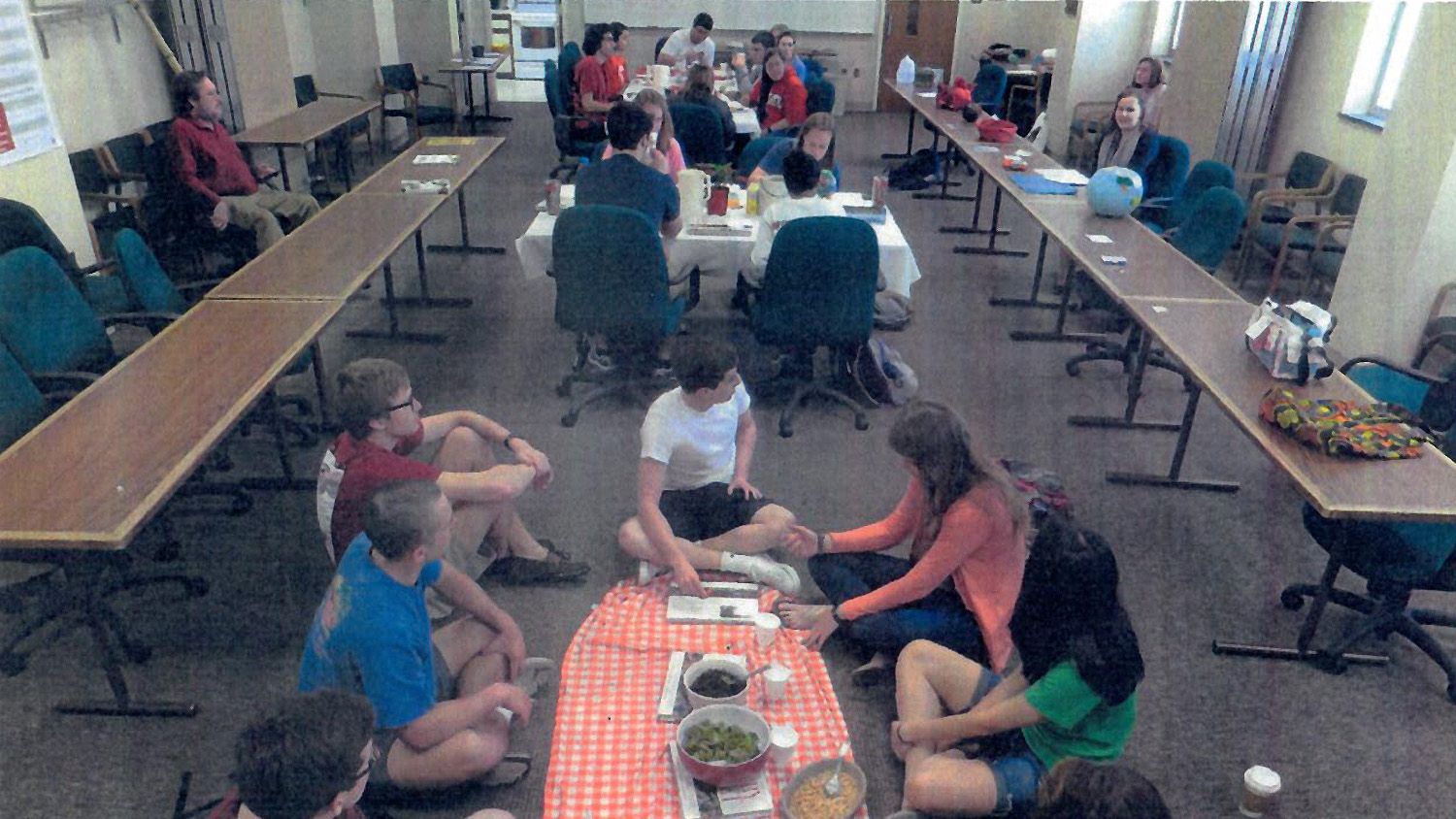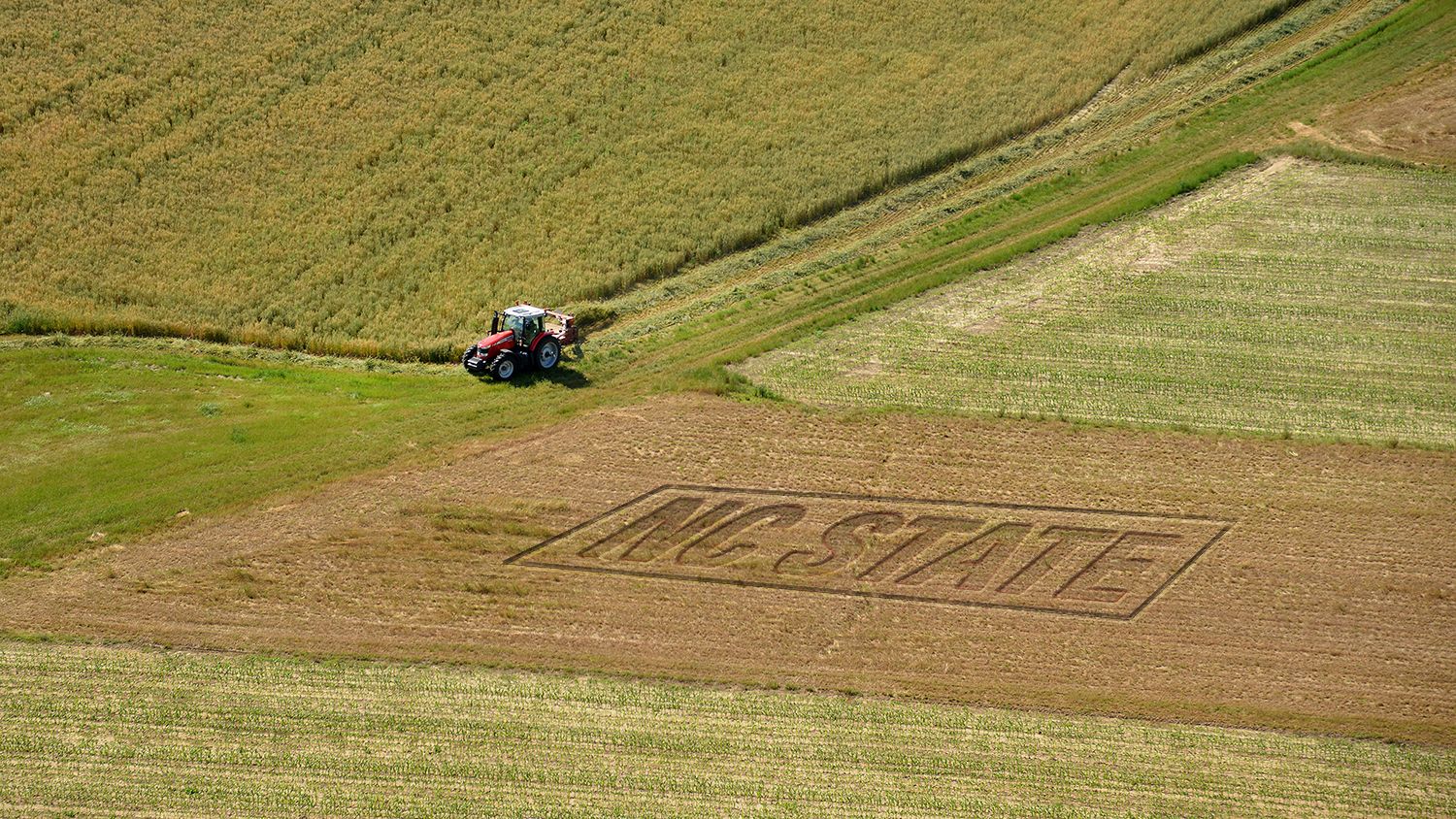
Thanksgiving is full of choices. Sit at the kid’s table or the adult’s? Serve apple or pumpkin pie? Watch football or parades? Rarely is it a choice of whether to eat or not.
While November’s turkey-centric Thanksgiving is a uniquely American holiday, the idea of celebratory feasting is not. However, the United Nations Food and Agriculture Organization reports that worldwide one in 10 people is hungry (lacking sufficient dietary energy). And one in three people lacks reliable access to sufficiently nutritious food. Each semester, North Carolina State University professor Bob Patterson introduces these stark facts to his freshman exploratory studies class through a hunger banquet experience.

Starting From A Place of Peace

Each week, Patterson’s young class arrives to learn about the university’s academic programs, including crop and soil sciences, and which program they might like to declare as a major. As their academic guide (and agronomy representative), he arranges the hunger banquet experience to dramatically conclude his semester-long task of introducing students to the value of crop and soil careers. In a quiet but dramatic fashion, the banquet poignantly illustrates the impact of and need for agricultural professionals.
In many areas, poverty persists despite abundant natural soil resources, like diamonds, cobalt, cadmium, and copper. But not the kind that supports agriculture. Patterson is quick to inform students that the soils of many Sub-Saharan villages offer effectively zero plant-available phosphorus, a critical macronutrient for crop production and food nutrition. Despite valuable in-ground minerals, the land accessible to most is empty of what they need most.

Patterson designed his hunger banquet experience to follow that of Oxfam, a global nonprofit working to meet the U.N.’s goal of zero hunger by 2030. He discovered the hunger banquet event in 1980 on his first of eight trips to the Democratic Republic of Congo (then Zaire), where he encountered the Peace Corps using the hunger banquet as training.
“They wanted newly arrived volunteers to understand the enormous contrast between those who favored the in-power political leadership of the country and those who did not,” Patterson said. “I want to connect our students with crop and soil initiatives that impact hunger, like those advocated by professor and Extension Specialist David Jordan, who travels to Ghana and other countries to work with local partners on growing legumes like peanuts.”

How Does A Hunger Banquet Work?
On banquet day, as students enter the classroom, they draw a number that determines their persona for the event – much as children are unwittingly born into their socioeconomic circumstances.
Inside the room, there are three dining areas set.
Table One
This fine spread is set with a tablecloth, china, crystal, and silver from Patterson’s own personal effects. The four students assigned to the high-income group will receive a generous meal with their choice of steak or chicken, multiple vegetables, drinks, and several fruit pies. They can choose from the multiple offerings and eat as much as they’d like. This group represents the 15% of the world population with an annual per capita income of $12,000 or more.
Table Two
Simple plates dot an unadorned folding table. This middle-income group of eight students represents 25% of the world’s population earning $1,000 – 12,000 per year. Food access and security vary widely in this group. A single illness or drought could thrust them into a cycle of poverty. They receive a small, single portion of meat, rice, one vegetable, and a sliver of pie. There are no dietary options nor refills.
Table Three
Table three isn’t a table at all. For most of the world’s population (roughly 60%) whose average income is less than $1,000 per year, daily life is a struggle. Meeting the basic needs of finding food, water, and shelter can consume the entire day. Eating once per day may alone be a blessing. The seven students assigned to this group sit on the floor. Today’s ‘feast’ will be a boiled vegetable, a meager scoop of plain rice, and a small cup of water. Often, they receive no utensils.

Intentionally Awkward
Once students are seated, questions quickly arise. “‘Can we give them some of our food?’ they always ask,” Patterson said. His startling answer is “No.” and the meal slowly begins. Students awkwardly attempt conversation, mostly to their own tablemates. Patterson lets them absorb the discomfort of the contrast.
But as in life, nothing is static. Abruptly Patterson stands and informs a student from the low-income group that they have found reliable work and may move up to the middle-income table. Patterson asks a few others from different tables to stand and switch seats based on employment changes, weather events, conflict, health and other variables.
‘Can we give them some of our food?’ they always ask.
In a true hunger banquet, attendees remain at their assigned tables for the duration. But Patterson seizes the opportunity to inspire hope. “About halfway through the meal, I tell them “Students, of course, you may share.’”
Immediately the students from the first table bring their untouched items to group three, often overlooking group two. But the tone of the room has changed, and they all begin talking together. Patterson says a grateful wave of relief crosses the room.
Thinking About Hunger At Home
While in-person classes resumed on campus this fall, in-class dining was not an option for Patterson’s class this fall. Not wanting to miss a teachable moment, he is inviting this fall’s students to consider the implications of a hunger banquet at their upcoming Thanksgiving table.
I want students to learn from this experience that we don’t all have the same choices. And we should never take them for granted.
While the effect is likely different, the opportunity of expanded reach is significant.
“I want students to learn from this experience that we don’t all have the same choices. And we should never take them for granted,” Patterson said.
He is quick to point out that the hunger banquet’s three economic segments do not represent specific countries or groups. Patterson refers to them as a gradient of “more, less, and least developed or industrialized areas.”
Though the experience portrays the global disparity of food access, a similar analogy can be made to the U.S. with 11% reporting food insecurity, North Carolina reporting 14%, or even disparity within any one community. All are numbers that have already increased and will likely continue to increase as a result of the COVID-19 pandemic.

Learning From Experience
You may be wondering why a crop science instructor teaches an exploratory studies course or incorporates a hunger-themed experience. Bob Patterson is a professor with an informed passion. In his crop science and interdisciplinary courses, students encounter recurring themes of gratitude, connection, and empowerment amidst traditional lectures.
Students in his exploratory studies and crop science courses regularly enjoy guest lecturers from many agricultural fields and take field trips to farms, urban gardens, NC State’s Agroecology Farm, and on-campus phytotron. Patterson requires his exploratory students to take a hands-on approach through soil sampling and vegetable planting, which will eventually be harvested for the hunger banquet. Students must also perform 15 hours of volunteerism, either on campus or off, with groups like the NC Food Bank, Interfaith Food Shuttle, or Boys and Girls Club.
“If students ask me ‘How do we know that we have used our time wisely this semester?’ I say this. ‘You will have an opportunity someday to contribute your time, energy, money, or creativity to some meaningful initiative where you can walk with – not for – those in need. If you can make the right choice that allows you and your family to sleep comfortably, then we’ll know we’ve been successful.”

Want a Second Helping of Crop and Soil Sciences?
Do you know a student interested in crop or soil sciences? NC State students learn from amazing professors like Bob Patterson every day. Share with your student our degree pathways or have them sign up for a guided email tour of our crop & soil sciences department.
Follow how our academic and research innovations affect agriculture and environmental science by joining our weekly newsfeed.
Teaching students the power of agriculture is just part of how we are growing the future.
